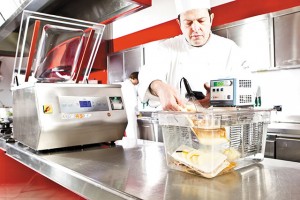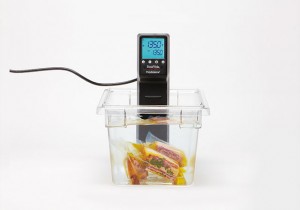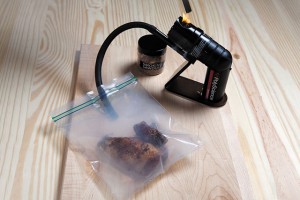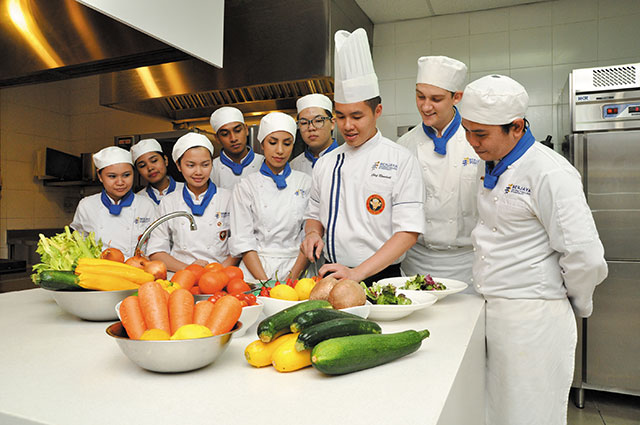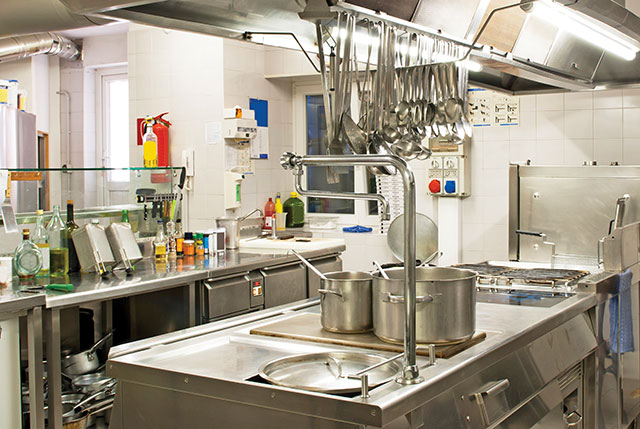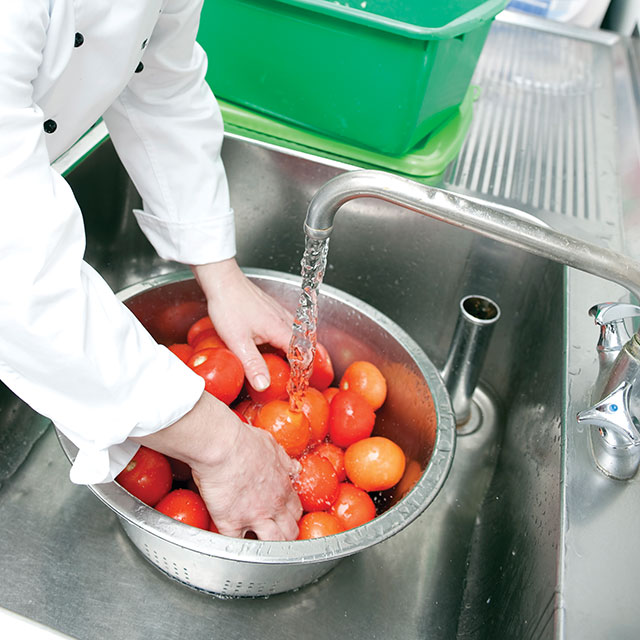No matter how simple or complicated a plate of food is served in front of you, there is method to it and those with the real heart for cooking work very actively in understanding the character of each produce. It is fascinating to find out what makes the ingredient tick, the methods to extract the best out of them and in the process, many have discovered accidental surprises and look at an ingredient in ways that were never thought of. This is the chemistry part when it comes to food preparation and with a little bit of ideation and experiments with technology, new gadgets have been created to help chefs bring an edge to their ways and ultimately, to elevate the experience for the diner. Some technology that has brought an air of evolution and some fun in cooking include:
SEALING FLAVOURS AND TEXTURE WITH SOUS-VIDE
To mean “under-vacuum” in French, this technique involves cooking food, whether meat, seafood, vegetable or fruit sealed in airtight plastic bags and placed in a controlled water bath for a long period of time. It makes way for even cooking that does not overcook the outside while the inside could still be raw; a frequent occurence in cooking over direct heat. While sous-vide is not exactly revolutionary; having been discovered by a Sir Benjamin Thompson in the late 1700s when he used air as the medium of heat transfering instead of water, it was rediscovered in the mid1960s by Amerian and French engineers and made into a food preservation method. And as evolution took place, Georges Pralus found that cooking foiegras this way kept its fats and resulted in better texture and active research then took place to find out the effects of water temperature on various foods. As the food in the bag cannot get hotter than the bath that it sits in, overcooking can be avoided.By adjusting the temperature and time, even irregularly shaped or thickly cut items can be cooked evenly. As for vegetables, sous-vide cooks them below the boiling point without losing a good texture and colour. A vacuum packing machine is used together with the water-bath and although excluding it may not be crucial from the cooking point of view, its practicality lies in food storage over a longer period of time as excluding oxygen removes oxidation on meat which can become rancid when exposed to air. Commercial kitchens use chamber vacuum sealers that create a low pressure environment inside and around the bag as it is sealed up in order to prevent liquids (the marinade) from leaking out.
A SMOKING TREAT ANYTIME
Smoking food has been a method that dates back to pre-civilisation days and with some clever adaptation; the smoking gun was made to conveniently apply natural smoke to food without the element of heat that was previously a bane to many. The Smoking Gun. by PolyScience takes this technique up a notch with its various ways of approaching smoking. It enables delicate herbs, vegetables, butter or seafood to be infused with the subtle aroma of woodchips when it was previously not possible as these foods cannot withstand the heat of a smoker. Its nifty gadget also infuses liquids like cocktails, sauces, marinades or vinaigrettes or finishing certain foods with complementing smoke flavours like dried flowers or tea leave. Chefs can also amplify the natural smoke aroma in certain ingredients or use it as an aesthetic presentation by smoking food tableside. The smoke gun is small and quietly operates on regular batteries and can be applied to smoke solid foods in a plastic bag, under a glass at the tableside, smoking liquids in a blender, glass or shaker, and even butter or cream in a stand mixer!
AROMATISING WITH VAPORIZATION
Nature is a chef’s playground; there are many wonderful ingredients out there which unfortunately do not taste good when eaten but its aroma can impart an extra factor in a culinary creation. To enable diners to explore more flavour profiles, a vaporizer helps by gently releasing scents by controlled heating without causing diners to experience the otherwise unpleasant flavour of a particular ingredient. Interesting fact; taste buds actually only allow us to perceive bitter, salty, sweet and sour but it is the odor molecules from food that provides most of our taste sensation but these odor compounds evaporate quickly when heated but most of these compounds can be distilled in the form of essential oils, resulting in many chefs using food grade essential oils to bring out the flavour in their dishes. A culinary evaporator vaporizes liquids at room temperature level to keep most of the volatile aromas by using a vacuum pump to change the atmospheric pressure while a heated water bath and rotating flask provides more surface area for vapor to be released into the distillation glassware.
SEMI-FROZEN SURPRISES
Liquids do not have to be served in its original state but can be turned into solid or semi-frozen pieces that hold creamy centres and crunchy surfaces with the flash-freezing technique. Using the Anti-Griddle, almost instantaneous unidirectional freezing is possible and helps develop dual-texture creations such as frozen lollipops that use an ingredient such as a sprig of rosemary in place of a conventional stick, serving salads with frozen dollops of vinaigrette dressing as diners have fun watching their dressing melt or making frozen ornaments to be used as decoration on the platter. The Anti-Griddle is built with a -30°F ‘griddle’ temperature to ensure instantaneous results and is a countertop with a dimension of about 1sq foot in size.
Inventions such as these are such delights for the chef with a desire to discover unique, ways to enliven their art of cooking and to ultimately bring to the table a dining experience to remember. And inventors of this funky equipment must be food lovers themselves who understand the workings of produce and ingredients to add so much element of fun to a chef’s life!
The abovementioned equipment of culinary technology is available from PolyScience. For more information, visit http://cuisinetechnology.com/index.php

